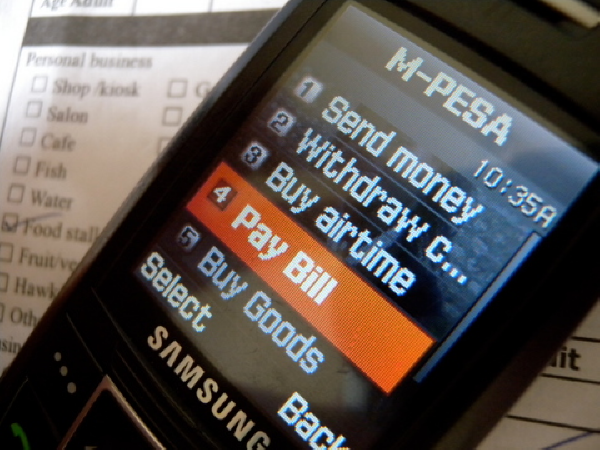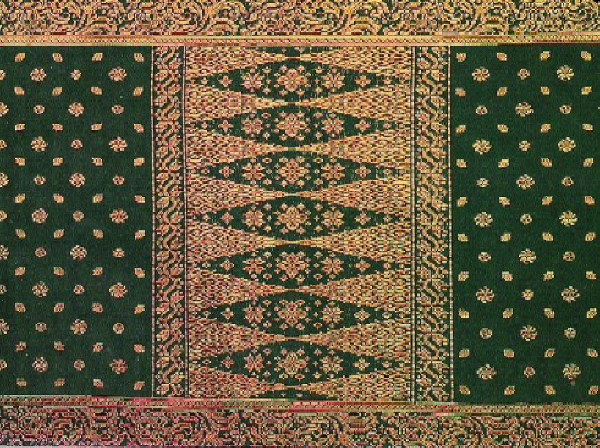In Korea, 1976, Dongshu Company made a unique invention. It was the ‘coffee mix.’ By combining ground coffee, cream, and sugar, the company offered the public access to coffee, which until that time had been a beverage only for the wealthy. The birth of this instant coffee allowed the general public to entertain guests over a cup of coffee and enabled consumers to enjoy a cup of coffee at a restaurant due to its fairly inexpensive price. This one brilliant creative thought has affected society up to present-day. Then, in other countries, what invention has made those nations’ citizens lives more comfortable? The Sookmyung Times met three foreign students currently enrolled at Sookmyung to investigate creativity abroad.

Student Information
Phyllis Wangechi Ndiangui (Kenya)
School of Communication & Media / Visa Student

One Small Program, to A Global Mobile Banking

The most recent technology introduction in Kenya is mobile banking also known to Kenyans as M-PESA. It has been successfully introduced into the Kenyan market. In April 2007, following a student software development project from Kenya, M-PESA was established. It was the first mobile banking systems in Africa and has since spread to India, Tanzania, South Africa and Afghanistan. Now, it is being introduced to Eastern European countries. “It is really fast and convenient, which are its greatest attributes. I believe M-PESA is going to go worldwide,” Phyllis added.
Safaricom launched a new mobile phone-based payment and money transfer service known as M-PESA. M-PESA was originally designed to allow micro-finance-loan repayments to be made by phone, reducing costs associated with cash transactions and thus making it possible to lower interest rates. However, after its pilot test, it grew to become a general money-transfer scheme. Once you register for M-PESA, you can buy account credit for cash at one of Safaricom’s 40,000 agents—typically corner stores selling airtime. You can make withdrawals from your account by visiting another agent, who checks that you have sufficient funds before debiting your account and giving you cash. You can also transfer account credit to others using a menu on your phone. Cash is then easily sent from one place to another more quickly, safely and easily than risking the carrying of huge amounts of cash in person or asking others to carry it for you. This means of handing one’s money is particularly useful in a country where many workers in cities send money back home to their families in rural villages. Electronic transfers save people time, and frees them up to do other more productive things instead.
Phyllis explained, “M-PESA has changed local lives and helped to avert hunger, illness, and missed school days. Since money is sent via mobile phone micro-financing, it is easy to send a dollar or two to the people back home. Those people who have no access to a bank can easily receive money. Also, M-PESA is easy to operate and senders do not need to go to ATM machines or bank, so many transfers today are done via mobile phones.” Moreover, M-PESA promotes businesses and enhances local economies. These days, even if you do not have cash for a taxi, if you have M-PESA, you can easily grab a cab. Because it is relatively easy for people to establish a M-PESA business, Kenya has increased its economy in rural areas by 5% to 30%.
In daily lives, M-PESA helps us to make payments, send and receive money at ease. As of 2014, M-PESA has well over 12.2 million active users and 81,000 agent outlets in Kenya. It is currently being used by 67% of adults in Kenya, which is a dramatic increase from 41% in 2009.

Student Information
Awangku Muhamad Tamizi Pengiran Abdul Rahman (Brunei)
Department of Social Psychology / Exchange Student

Yesterday’s Symbol of Authority, Today’s Best – day Clothes

Before the interview, he introduced himself with the shortened name, and Mizi introduced his country is proud of “Jong sarat,” a unique textile of Brunei. Jong Sarat is a handwoven piece of cloth; sometimes, it features special designs or patterns. According to Mizi, the inventor of Jong Sarat is unknown, but historical records indicate it has been around since the 15th Century. It was first used by the Puni King, the ancient name of Brunei. He added, “Since it is woven material, it is made of expensive threads like silk. It was used by royal families and even nobles, and it was a sign of prestige, wealth and power.” However, now, use of Jong Sarat is not exclusive to royal families. It is common to see the general public also using it. People wear the cloth on special occasions like engagements or at weddings to display their full beauty. It makes all people look eloquent on special events. Mizi continued with, “Jong Sarat differs for males and females. Males wear the cloth around their waists. Sometimes, it is compared to Korean Hanbok, but the designs and patterns are distinct to Brunei. Also, Indonesia, a neighboring country to Brunei, has its own version of Jong Sarat, but the motifs differ.” Jong Sarat is not wore only on special occasions; it is also seen being worn on national holidays and religious days. Mizi said, “On national holidays, people, especially men wear the cloth around their waists to complete a traditional look. It also shows respect for the national holiday. If male opts not to wear the traditional clothing, people see him as being disrespectful and untidy. Especially, in front of royal families, all Bruneians must wear traditional clothing to show respect to the nation’s ruling people.” The only major disadvantage to this cloth is that it is very expensive. Most people do not purchase the cloth, but instead, rent it. The cost of the cloth is anywhere from 1,000 to 2,000 dollars, depending on the material, design and the amount of fabric used. Even more affordable ones can cost between 300 to 500 dollars. He added, “For the rich, they can afford to purchase their own outfit, but for the less privileged, they tend to rent, the cloth on national holidays. Women, on the other hand, usually do not wear it on national holidays because of the high price.”
At the end of the interview, Mizi added he hopes that one day, Bruneian scientists invent a teleportation device because “I could travel anywhere in a mere instant, especially, from Brunei to Korea since I’m living in Korea now. Spring is so nice and cool compared to my home country. Also, I believe if the device were used properly, it could benefit numerous people all over the world, especially those countries that are suffering from poverty. We can transport food and clothing.” Lastly, if he had the ability, he would like to invent a way to implant video cameras on people’s heads so that they could record specific moments for review later. He would also like to help patients with Alzheimer’s disease and people with short memory loss like Dori in the movie Finding Nemo.

Student information
Areej Mohammed AlQassem (Kingdom of Saudi Arabia)
School of English Literature / Visa Student

Bright idea can save life

AlQassem said her home country has produced a number of useful inventions. Among those inventions, she chose to introduce the development of technology used for sewing surgical wounds, especially on thick skin. The invention is so unique that the technology had an American patent and won a gold medal at the International Exhibition of Inventions in Geneva. According to AlQassem, the inventor of this technology is Professor Khaled AlGhamdi at the College of Medicine of King Saud University. The invention was designed to advance the healing of wounds. AlQassem said, “The invention definitely helps patients to swiftly heal and ensures a quicker recovery period after surgery.” When the Sookmyung Times asked “Are people taking advantage of this new technology often?” she said, “This will positively assist doctors when performing their work and patients with a faster recovery, and return them home to their families safely.” She pointed the greatest aspect of the invention is the fact that it helps both the surgeon and the patient.
AlQassem hopes that in future technology advances and one day there is a battery charger in our shoes. At present, scientists are striving to make this seemingly impossible idea come to life. She said, “At the moment, walking produces energy, but it is unfortunately not enough to exceed the 1.5 volts needed to charge a phone. However, after many attempts Saudi inventor, Aqueel AlRadi has managed to increase that voltage by installing a toy car dynamo in shoes. The small wheels enhance the walking power needed to charge a phone.” Additionally, she thinks that in the future, it would be great if there was a method of inputting new information learnt at school directly into our brain cells. “This would assist all students; they would gain basic knowledge quickly.” Then pondering her comment, she said, ”On the other hand, it may take away some of the fun of learning.”


